Aloe Vera for Skin and Health: Ultimate Guide
I use Aloe vera for skin and health daily. This plant has become a staple in my kitchen and my bathroom.
I grow over 20 plants, and I plan on growing over 100 in the near future for my use and to sell the leaves to others so they can enjoy Aloe vera’s benefits.
I honestly can’t imagine my life without Aloe vera. As I explore its benefits, I keep discovering new research and informative insights, each more fascinating than the last!
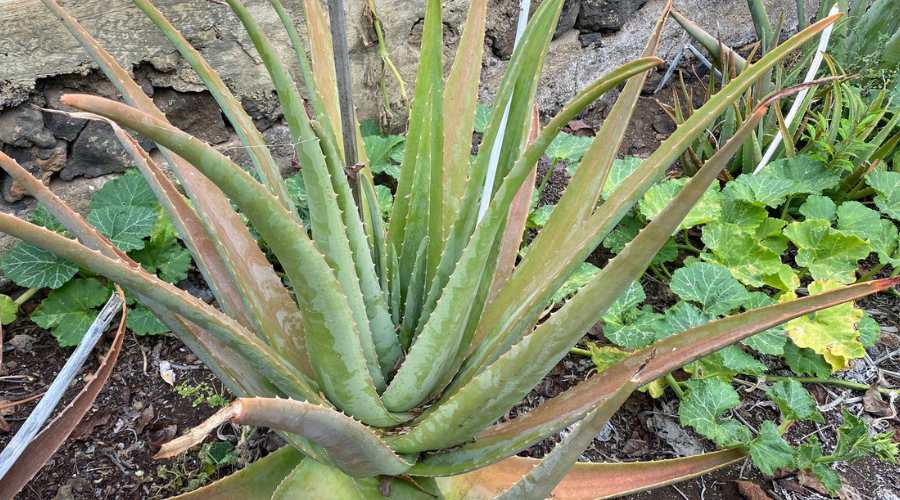
About Aloe Vera
Scientific Name: Aloe Barbadensis Miller
Common Name: Aloe vera
Family: Asphodelaceae
Description: Aloe vera is a succulent plant species of the genus Aloe. It is an evergreen perennial that originates from the Arabian Peninsula but grows wild in tropical, semi-tropical, and arid climates around the world. It is cultivated for agricultural and medicinal uses. The species is also used for decorative purposes and grows successfully indoors as a potted plant.
Historical Uses of Aloe Vera
Aloe vera has been revered for millennia, from the sands of Egypt to the ancient scriptures of India and China.
- Ancient Civilizations: The Greeks saw it as a universal panacea, while the Egyptians dubbed it the “plant of immortality.” It wasn’t just for beauty but a symbol of healing and protection.
- Royal Endorsements: Egyptian queens like Nefertiti and Cleopatra incorporated Aloe Vera into their beauty routines. Even great leaders like Alexander the Great and Christopher Columbus used it, especially to treat soldiers’ wounds.
- Traditional Medicine: The first English reference to Aloe Vera was in A.D. 1655, translating Dioscorides’ Medical treatise “De Materia Medica.” By the early 1800s, it was being used as a laxative in the U.S. However, its significant moment came in the mid-1930s when it was effectively used to treat severe radiation dermatitis.
- Modern Uses: Today, beyond its traditional uses, Aloe Vera has found a prominent place in dermatology, thanks to its many benefits for the skin.
Check out this interesting article on 10 Facts About the History of Aloe Vera.
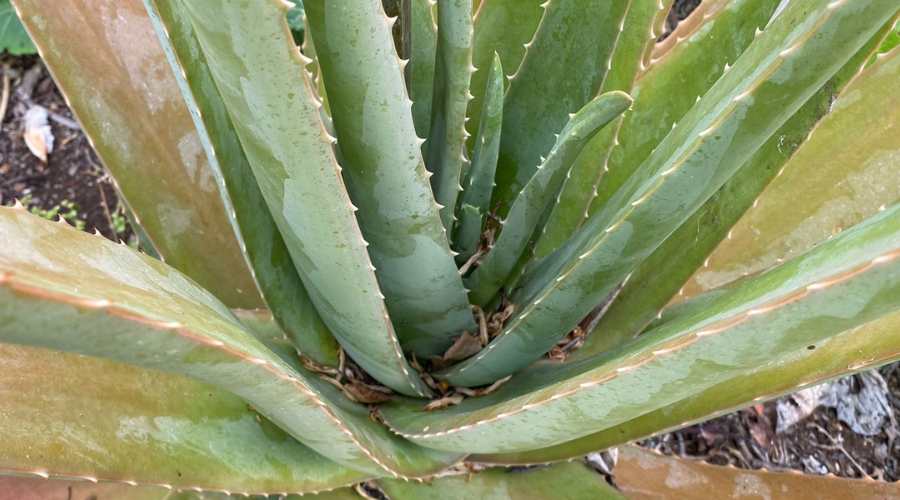
A Closer Look at Aloe Vera and Its Chemical Composition
When you slice open one of its fleshy leaves, this is what you find:
Polysaccharides
- For Skin: The hydration champions, ensuring our skin remains moisturised and soothed. (This studyhighlights the role of these polysaccharides in skin hydration and health.).
- For Health: They play a crucial role in digestive health, aiding in gut function and promoting beneficial bacteria. This paper discusses the role of Aloe vera’s polysaccharides in promoting gut health).
Vitamins
- For Skin: Packed with vitamins A, C, and E, Aloe is a natural antioxidant powerhouse, keeping our skin radiant and youthful. Source.
- For Health: These vitamins boost the immune system, help with vision, and protect the body against oxidative damage. This paper highlights the vital role of vitamins in liver health.
Enzymes
- For Skin: The unsung heroes, reducing inflammation and gently exfoliating the skin.
- For Health: They aid in breaking down sugars and fats in the digestive system, promoting better nutrient absorption. This paper looks at enzymes’ role in digestion and nutrient absorption.
Minerals
- For Skin: Think of magnesium, zinc, and potassium as Aloe’s gift to our skin, nourishing it from the outside in. This paper provides insights into the mineral-rich composition of Aloe Vera and its positive effects on skin health.
- For Health: These minerals are vital for heart health, nerve function, and maintaining strong bones and muscles. Paper on vitamin D’s role in bone health.
Amino Acids
- For Skin: Essential for skin regeneration and wound healing, these are the silent workers behind Aloe’s magic.
- For Health: Amino acids are the building blocks of proteins, important for muscle growth, tissue repair, and neurotransmitter production. They play a crucial role when it comes to health.
A helpful table for understanding Aloe’s benefits for skin and health:
| Component | For Skin | For Health |
|---|---|---|
| Polysaccharides | Ensure skin remains moisturised and soothed. | Crucial for digestive health and promoting beneficial bacteria. |
| Vitamins | Natural antioxidant powerhouse with vitamins A, C, and E. | Boost the immune system, aid vision, and protect against oxidative damage. |
| Enzymes | Reduce inflammation and exfoliate the skin. | Help break down sugars and fats for better nutrient absorption. |
| Minerals | Nourish the skin with magnesium, zinc, and potassium. | Essential for heart health, nerve function, and strong bones and muscles. |
| Amino Acids | Support skin regeneration and wound healing. | Building blocks of proteins vital for muscle growth and tissue repair. |
With such a rich composition, it’s no wonder that Aloe Vera has transcended time, becoming a staple in modern skincare routines.
Aloe Vera Benefits for Skin

- Anti-inflammatory Properties: Aloe Vera’s standout feature is its ability to soothe and reduce inflammation. Research has shown its effectiveness in wound and burn healing, attributing these properties to the biologically active components in the gel.
- Moisturising Effects: Dry skin? Aloe Vera to the rescue! The gel is rich in polysaccharides that lock in moisture, leaving the skin feeling hydrated and refreshed. A study highlighted its role in skin moisturisation and its potential uses in Plastic Surgery.
- Wound Healing: Aloe Vera isn’t just for beauty; it’s a symbol of healing. Its gel promotes wound healing, making it a go-to for minor cuts and burns. Older adults who underwent hernia surgery even experienced accelerated wound healing when treated with Aloe Vera, as noted in this research.
- Protection Against Modern Threats: In our ever-evolving world, Aloe Vera has shown potential in tackling modern health challenges, including acting as a protective coating against microbes like COVID-19, as highlighted in a recent study.
Scientists keep discovering new facets of Aloe Vera’s benefits for our skin and I think it is clear that we’re only at the beginning. With each research breakthrough, Aloe Vera continues to solidify its place as a skincare powerhouse.
Aloe Vera Benefits for Health
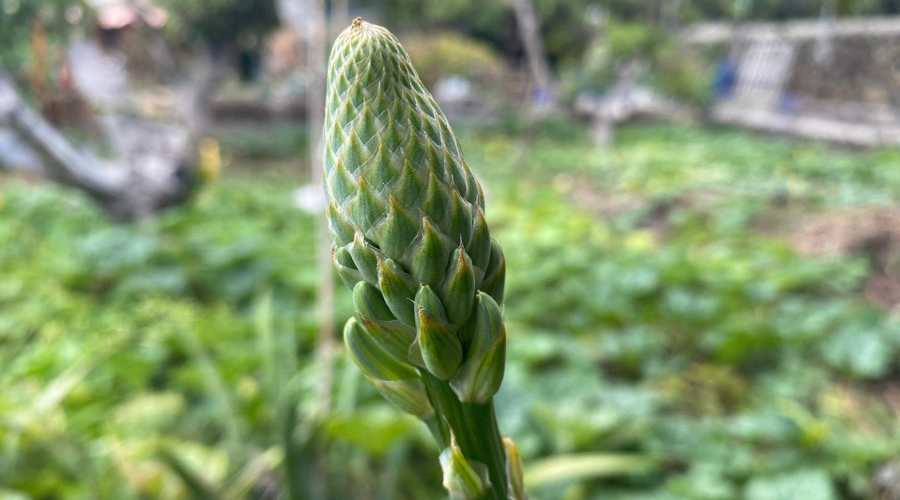
When taken internally, Aloe vera offers a multiple plethora of benefits:
- Digestive Aid: Aloe Vera’s natural enzymes and polysaccharides aid digestion, helping break down sugars and fats and promoting better nutrient absorption. This can be particularly beneficial for those with irritable bowel syndrome or other digestive complaints.
- Immune System Boost: Packed with vitamins and minerals, Aloe Vera supports our immune system, helping to fend off illnesses and infections.
- Detoxification: Aloe Vera juice is a natural detoxifier, helping cleanse the body of toxins and impurities.
- Anti-inflammatory Properties: The natural compounds in Aloe Vera can help reduce inflammation internally, potentially benefiting conditions like gastritis or ulcerative colitis.
- Blood Sugar Regulation: Some studies suggest that Aloe Vera can help regulate blood sugar levels, making it a potential aid for diabetics.
- Cholesterol Management: Aloe Vera has enormous therapeutic potential and has been linked to reducing bad cholesterol levels and supporting heart health.
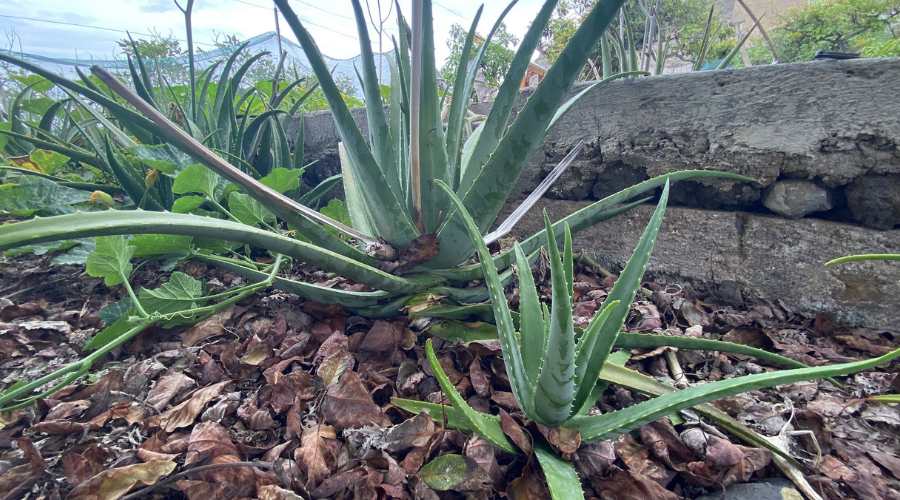
About Aloe Vera Products
There’s a wide range of Aloe Vera products in the market.
Many people are familiar with the gels for skin care, but Aloe Vera juice is also great for overall health. Each product type has its own benefits.
Aloe Vera Gel
Originating from the innermost part of the Aloe Vera leaf, the gel is the plant’s heart. This clear, jelly-like substance, packed with nutrients and beneficial compounds, oozes out cool and soothing when you break open a fresh leaf.
Aloe Vera Gel Benefits
Aloe vera gel is a skincare marvel, offering relief from sunburns, speeding up the healing process for minor burns, and serving as a remedy for various skin conditions.
Its benefits extend beyond the skin; it’s a boon for oral health, reducing dental plaque and aiding in healing mouth ulcers.
Aloe vera can relieve heartburn, alleviate IBS symptoms, and even aid blood sugar management when ingested.
Additionally, its rich nutritional profile, ability to soothe allergic reactions, and promising research in areas like cancer treatment and herpes management underscore its multifaceted health benefits.
From Leaf to Bottle
Extracting Aloe Vera gel is a delicate process. It’s typically done by hand to ensure only the pure gel from inside the leaf is obtained, leaving behind the outer leaf that contains aloin, a compound that can be harsh on the skin.
Once extracted, the gel can be used directly or processed further for inclusion in commercial products.
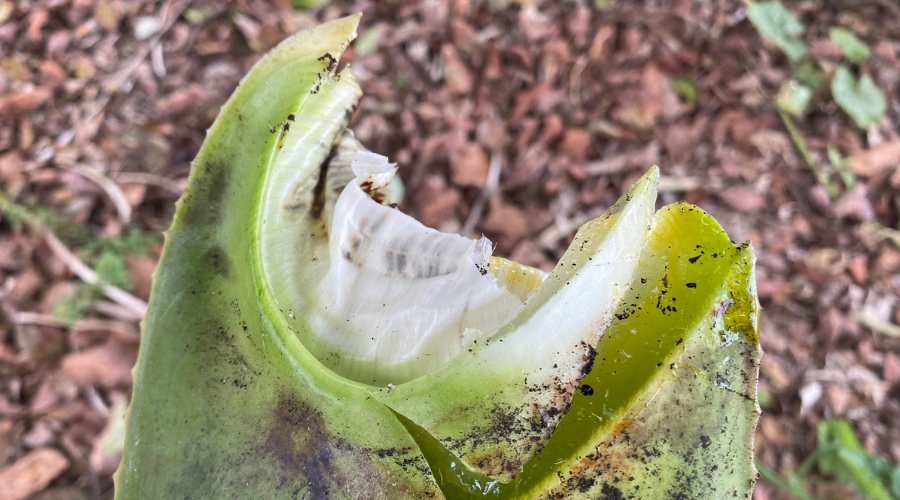
Pure Gel vs. Commercial Products
Not all Aloe Vera products are created equal. While pure Aloe Vera gel is translucent and slightly watery, many commercial products add thickeners, preservatives, or fragrances.
It’s essential to read labels and choose products that have a high percentage of pure Aloe Vera gel.
Storage
If you’re extracting the gel directly from the plant, it’s best used immediately. However, if you need to store it, keep it in a cool place or refrigerate it for 3-4 days.
Commercially bought gels will have a longer shelf life, but they will have used some form of preservative. Always check for expiration date and follow instructions on how to store.
Everyday Uses
The versatility of Aloe Vera gel is unmatched. It’s a popular after-sun care product, known for its cooling and healing properties. Many use it as a daily moisturiser, while others swear by its efficacy as a hair mask. Its anti-inflammatory properties also make it a go-to remedy for acne flare-ups and other skin irritations.
- After-Sun Care: Known for its cooling and healing properties, it’s a favourite for soothing sunburned skin.
- Daily Moisturiser: Its hydrating properties make it an excellent choice for keeping the skin soft and moisturised.
- Hair Mask: Aloe Vera gel can be applied to the hair and scalp to provide hydration and reduce dandruff.
- Acne Remedy: Its anti-inflammatory properties help reduce acne flare-ups and soothe the skin.
- Skin Irritations: Effective in calming skin irritations like rashes, insect bites, and minor burns.
- Shaving Gel: Acts as a natural shaving gel, providing a smooth surface and reducing post-shave redness.
- Makeup Remover: A gentle way to remove makeup without stripping the skin of its natural oils.
Aloe Vera Juice Benefits
Derived from the inner fillet of the Aloe Vera leaf, the juice is the plant’s lifeblood. This clear, slightly tangy liquid, brimming with nutrients and beneficial compounds, flows out refreshing and revitalising when you extract it from a mature leaf.
How the Juice is Extracted
Aloe Vera juice is primarily extracted from the inner leaf gel, which is the clear, mucilaginous substance found inside the leaf. Here’s a brief overview of the extraction process:
- Harvesting: Mature Aloe Vera leaves are hand-harvested from the plant. The age of the leaf is crucial as older leaves contain more nutrients and active compounds.
- Rinsing: Once harvested, the leaves are washed to remove any dirt or contaminants.
- Fillet Extraction: The thick outer green skin of the leaf is carefully sliced off to reveal the clear inner gel. This is done using sharp knives, and care is taken to avoid the yellow sap (aloe latex) that lies just beneath the leaf skin, as it can be a potent laxative.
- Blending: The clear inner gel is then blended to produce a liquid consistency, resulting in what we commonly refer to as Aloe Vera juice.
- Stabilisation: To ensure the juice retains its beneficial properties, it’s often stabilised using natural preservatives or cold-pressed to maintain its freshness.
- Filtration & Pasteurisation: The juice is then filtered to remove any remaining solid particles and may undergo a pasteurisation process to kill any bacteria, ensuring it’s safe for consumption.
- Packaging: Finally, the juice is packaged in bottles or cartons, ready for sale.
Learn to Spot Fake Products
The below video offers a behind-the-scenes look into the industrial process of harvesting and processing Aloe Vera leaves. It provides valuable insights into the meticulous steps and techniques employed to produce high-quality Aloe Vera products for the market.
Watch out particularly to learn how real Aloe vera gel and juice is made and to spot fake products in a $625 million industry.
- 00:00: Aloe vera farming involves daily planting of 3,000 to 3,500 aloe vera leaves per employee.
- 01:13: Workers carefully trim the aloe vera leaves, removing thorns and preserving the main part.
- 02:10: The harvested aloe vera is processed into 20,000 gallons of fresh juice daily, starting with washing and disinfection.
- 04:07: Aloe vera production is largely artisanal due to the irregular morphology of the plant, resulting in less waste.
- 05:04: The final product is 99.9% pure aloe vera gel, with the remaining 0.1% being added for stability.
- 05:44: Daily quality checks include analyzing pH, viscosity, color, texture, and overall appearance of the aloe vera gel.
- 07:29: Aloe vera is used as a natural ingredient in supplements and cosmetics.
How to identify the products made with real Aloe vera?
Even though it is tricky to identify products made with real Aloe vera unless you are familiar with the plant and processes, here are a few suggestions extracted from the video:
- Check the ingredient list: You want to see Aloe on top of the list, ideally as the first ingredient in the product if the product claims to be Aloe vera gel or juice.
- Careful with the wording: If the product says “Aloe vera leaf juice” or “Aloe vera leaf gel” it could be any part of the leaf, which means the latex or aloin would be present, and this substance can have a laxative effect. Check my article on “Aloe vera yellow liquid” to find out more about this substance.
- Watch out for “tricky” words: For example, if it says 100% gel, it could mean that it is 100% filled with gel, but is it all Aloe? Gel can be made with other ingredients, like carbomer. Is it made with the whole leaf or just the fillet inside the leaf, which would be what is wanted?
- Preservatives and additives: While some preservatives are necessary to extend the shelf life of Aloe Vera products, be wary of those with a long list of chemicals. Ingredients like parabens might not be ideal for sensitive skin or those looking for a more natural product.
- Colour and Consistency: Pure Aloe Vera gel is clear and slightly watery. If the product is too thick or has an artificial green colour, it might contain additives or dyes.
- Fragrance: While some Aloe Vera products might have a mild, natural scent, be cautious of those with a strong fragrance. It could indicate the addition of synthetic fragrances, which some people might be sensitive to.
- Expiration Date: Natural products have a shorter shelf life. Always check the expiration date to ensure you’re using a fresh product.
- Certifications: Look for certifications like “Organic” or “Naturally Derived” to ensure you’re getting a quality product. Certifications from recognised bodies can give an added layer of trust.
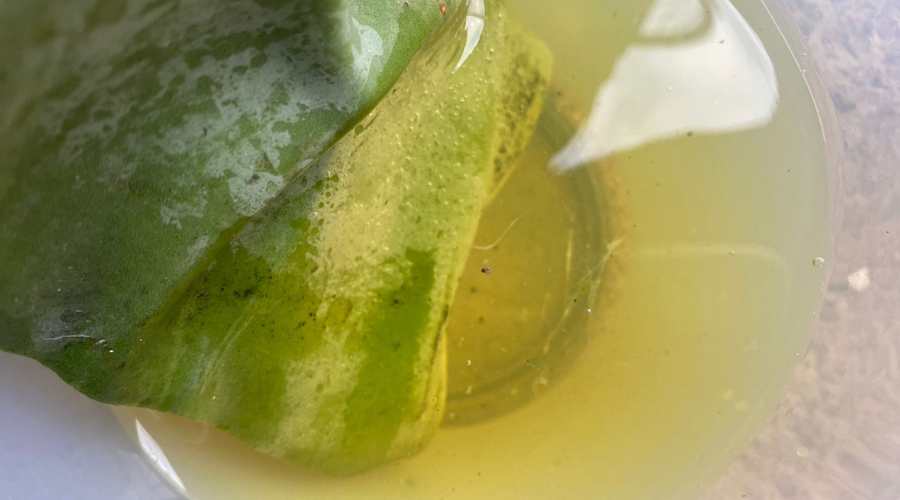
Helpful questions to learn from the video
The below questions can help you in making an informed decision when purchasing Aloe Vera gel or juice:
- How are the leaves processed: by hand or with machinery?
- Does the company utilise fresh Aloe Vera leaves or rely on powdered forms for its products?
- Are ethical practices followed in the treatment of both the Aloe Vera plants and the workers?
- What percentage of the product is pure Aloe Vera?
- Are there any added preservatives or artificial ingredients in the product?
- How does the company ensure the freshness and potency of the Aloe Vera used?
- Is the product certified organic or sustainably sourced?
- Are there any third-party lab tests or certifications to vouch for the product’s purity and quality?
- How is the product packaged? Is it in light-protective containers to maintain its efficacy?
- What is the product’s shelf life, and does it require refrigeration after opening?
- Are there any customer reviews or testimonials available to gauge product effectiveness?
- Does the company have a transparent supply chain, revealing where they source their Aloe Vera from?
Safety and Precautions
As with all natural products, it is essential to approach its use with knowledge and caution.
Here’s a concise guide to ensure you benefit from Aloe Vera safely:
Potential Side Effects
- Topical Use: While Aloe Vera gel is generally safe for skin application, some people might experience redness, burning, or a rash. Doing a patch test before applying it extensively is always a good idea.
- Oral Consumption: Drinking Aloe Vera juice, especially in large quantities, can lead to stomach cramps, diarrhoea, or lowered blood sugar levels. Further reading.
Who Should Be Cautious
- Pregnant and Breastfeeding Women: It’s advisable for pregnant or breastfeeding women to avoid consuming Aloe Vera orally as it might stimulate uterine contractions or be harmful to the baby.
- People on Medication: Those on medications for diabetes or diuretics should consult with a healthcare professional before consuming Aloe Vera juice, as it can enhance the effects of these drugs. You can refer to the Mayo Clinic’s article on Aloe Vera for a more detailed overview.
Proper Usage
- Dosage: If consuming Aloe Vera juice, always stick to the recommended dosage, usually a few tablespoons per day.
- Quality Matters: Ensure you’re using products from reputable brands. Look for Aloe Vera products without added fillers, artificial colours, or preservatives.
- Storage: Store Aloe Vera products as per the manufacturer’s guidelines, typically in a cool, dry place. Some products might require refrigeration after opening.
DIY with Aloe Vera
Below, you’ll uncover a collection of DIY gems centred around the wonders of Aloe Vera. If you’re keen on treating your skin, revitalising your locks, or just indulging in a bit of self-pampering, these homemade blends are set to be your new beauty staples. Step into the world of Aloe Vera and craft your personal beauty elixirs.
- Aloe Vera Toner: Use the gel as a toner day and night. Add a few drops of essential oil like lavender for a refreshing toner.
- Aloe Vera Moisturiser Boost: Blend a dollop of your favourite moisturiser with a teaspoon of Aloe Vera gel for added hydration and a smooth finish.
- DIY Face Masks: Aloe Vera gel can be mixed with ingredients like turmeric or agave syrup to create soothing and hydrating face masks. Its anti-inflammatory properties can help reduce redness and acne.
- Lip Care: Chapped lips? A little bit of Aloe Vera gel can work wonders. Its hydrating properties can help soothe and moisturize dry lips.
- Hair Care: Aloe Vera gel can be mixed with coconut oil or olive oil to create a nourishing hair mask. It can help reduce dandruff and promote hair growth. It can also be used on its own, and you can leave it til it soaks in and let it dry naturally. It will reshape curls beautifully.
- Body Scrub: Combine Aloe Vera gel with organic unrefined sugar or pure sea salt to create a natural exfoliating body scrub.
- Eye Gel: Aloe Vera’s cooling properties make it an excellent natural remedy for puffy eyes. Apply a small amount under your eyes before bedtime.
- Cuticle Care: Dry cuticles can benefit from the moisturizing properties of Aloe Vera. Apply it directly to your cuticles and nails for better nail health.
Remember, while Aloe Vera is generally safe for topical use, it’s always a good idea to do a patch test first, especially if you’re trying out a new DIY recipe. This will ensure you don’t have any allergic reactions. Also, always make sure to use use pure aloe Vera gel, especially if you’re incorporating it into DIY recipes for skin and hair.
How Does it Compare with Other Natural Remedies?
I love Aloe and what it does. I also use other natural remedies lately and always want to know how they compare with each other.
How does Aloe Vera stack up against other popular remedies?
Let’s take a brief look:
Aloe Vera vs. Witch Hazel:
- Aloe Vera: Renowned for its moisturising and anti-inflammatory properties, it’s a go-to for sunburns and skin irritations.
- Witch Hazel: Often used as an astringent, it can help tighten the skin and reduce inflammation but might be drying for some skin types.
Aloe Vera vs. Tea Tree Oil:
- Aloe Vera: Besides its soothing properties, Aloe Vera can help with acne due to its antibacterial nature.
- Tea Tree Oil: A potent antibacterial and antifungal agent, it’s a popular choice for treating acne and fungal infections but can be too strong for sensitive skin.
Aloe Vera vs. Coconut Oil:
- Aloe Vera: Lightweight and hydrating, it’s easily absorbed by the skin without leaving a greasy residue.
- Coconut Oil: A rich moisturiser, it’s great for dry skin but can be comedogenic (pore-clogging) for some.
Aloe Vera vs. Lavender Oil:
- Aloe Vera: Its gel consistency provides cooling relief and promotes skin healing.
- Lavender Oil: Known for its calming scent, it has anti-inflammatory properties but should be diluted to avoid skin irritation.
A true powerhouse of health and beauty, Aloe Vera holds its own in the realm of natural remedies, offering a versatile range of benefits suitable for various skin types and concerns.
While each remedy has its strengths, Aloe Vera’s gentle and multifaceted nature makes it a staple in many skincare routines.
Conclusion
Aloe Vera, nature’s green gem, has woven its way into our daily routines, offering many benefits for our skin and overall health. Its diverse uses, from calming inflamed skin to aiding digestion, highlight its unique adaptability. Whether you’re applying its gel to soothe a burn or drinking its juice for a health boost, Aloe Vera consistently demonstrates its age-old significance.
But its value goes beyond just physical benefits. Aloe Vera encourages us to embrace the natural world, reminding us of the potent remedies that Mother Nature provides. In a world where artificial solutions often take centre stage, Aloe Vera remains a beacon of organic wellness.
As we’ve explored its vast advantages, it’s evident that Aloe Vera’s role in holistic health is not just a trend but a timeless tradition.
Recommended Aloe Vera Studies
- Pharmacological Update Properties of Aloe Vera and its Major Active Constituents
- Novel Bio-Functional Aloe vera Beverages Fermented by Probiotic Enterococcus faecium and Lactobacillus lactis
- A comprehensive overview of functional and rheological properties of aloe vera and its application in foods
- Aloe Vera-Based Hydrogels for Wound Healing: Properties and Therapeutic Effects
- Aloe vera: A review of toxicity and adverse clinical effects
- Aloe Genus Plants: From Farm to Food Applications and Phytopharmacotherapy
- High-Content Aloe vera Based Hydrogels: Physicochemical and Pharmaceutical Properties
References
- Salsabila T, Indriyani W, Sari Y, Yuniarsih N. Utilization of Aloe vera Plants as a Raw Materials for Cosmetics: A Narrative Review. 1 [Internet]. 2022 [cited 2023 Sep 11]; 2(4):231–6. Available from: https://hmpublisher.com/index.php/OAIJMR/article/view/220.
- Abe RAM, Masroor A, Khorochkov A, Prieto J, Singh KB, Nnadozie MC, et al. The Role of Vitamins in Non-Alcoholic Fatty Liver Disease: A Systematic Review. Cureus [Internet]. 2021 [cited 2023 Sep 11]; 13(8). Available from: https://www.cureus.com/articles/63283-the-role-of-vitamins-in-non-alcoholic-fatty-liver-disease-a-systematic-review.
- Rahman MM, Amin R, Afroz T, Das J. Pharmaceutical, Therapeutically and Nutraceutical Potential of Aloe Vera: A Mini-review. Journal of Pharmaceutical Research International [Internet]. 2021 [cited 2023 Sep 11]; 109–18. Available from: https://journaljpri.com/index.php/JPRI/article/view/2794.
- Yagi A, Kabbash A, Al-Madboly LA. Short Chain Fatty Acids from Fermentation By Endophytic Bacteria in Aloe Vera Leaf Rind and Gel. jghr [Internet]. 2016; 5(4):2122–4. Available from: http://www.ghrnet.org/index.php/joghr/article/view/1817.
- Jales STL, Barbosa R de M, Albuquerque AC de, Duarte LHV, Silva GR da, Meirelles LMA, et al. Development and Characterization of Aloe vera Mucilaginous-Based Hydrogels for Psoriasis Treatment. Journal of Composites Science [Internet]. 2022 [cited 2023 Sep 11]; 6(8):231. Available from: https://www.mdpi.com/2504-477X/6/8/231.
- Iqbal F, Ahmed A. Efficacy of Aloe vera in human health especially against COVID-19: Lahore Garrison University Journal of Life Sciences [Internet]. 2023 [cited 2023 Sep 11]; 7(02):199–215. Available from: https://lgujls.lgu.edu.pk/index.php/lgujls/article/view/263.
- Toha M, Sujarwadi M, Zuhroidah I. EFFECT OF ALOE VERA EXTRACT AND DISCHARGE PLANNING TO ACCELERATE WOUND HEALING OF OLDER ADULT HERNIA SURGERY PATIENTS. Nurse and Health: Jurnal Keperawatan [Internet]. 2019 [cited 2023 Sep 11]; 8(2):124–33. Available from: https://ejournal-kertacendekia.id/index.php/nhjk/article/view/121.
- Zeng WM, Parus A, Barnes CW, Hiro ME, Robson MC, Payne WG. Aloe vera—Mechanisms of Action, Uses, and Potential Uses in Plastic Surgery and Wound Healing. Surgical Science [Internet]. 2020 [cited 2023 Sep 11]; 11(10):312–28. Available from: https://www.scirp.org/journal/paperinformation.aspx?paperid=103746.
- Jose E, Joseph S, Joy M. ALOE VERA AND ITS BIOLOGICAL ACTIVITIES. World Journal of Current Medical and Pharmaceutical Research [Internet]. 2021 [cited 2023 Sep 11]; 21–6. Available from: https://wjcmpr.com/index.php/journal/article/view/167.
- Lee JT, Rochell SJ, Kriseldi R, Kim WK, Mitchell RD. Functional properties of amino acids: improve health status and sustainability. Poultry Science [Internet]. 2023 [cited 2023 Sep 11]; 102(1):102288. Available from: https://www.sciencedirect.com/science/article/pii/S0032579122005831.
- Salsabila T, Indriyani W, Sari Y, Yuniarsih N. Utilization of Aloe vera Plants as a Raw Materials for Cosmetics: A Narrative Review. 1 [Internet]. 2022 [cited 2023 Sep 11]; 2(4):231–6. Available from: https://hmpublisher.com/index.php/OAIJMR/article/view/220.
- Tornero-Martínez A, Cruz-Ortiz R, Jaramillo-Flores ME, Osorio-Díaz P, Ávila-Reyes SV, Alvarado-Jasso GM, et al. In vitro Fermentation of Polysaccharides from Aloe vera and the Evaluation of Antioxidant Activity and Production of Short Chain Fatty Acids. Molecules [Internet]. 2019 [cited 2023 Sep 11]; 24(19):3605. Available from: https://www.mdpi.com/1420-3049/24/19/3605.
- Rahman MM, Amin R, Afroz T, Das J. Pharmaceutical, Therapeutically and Nutraceutical Potential of Aloe Vera: A Mini-review. Journal of Pharmaceutical Research International [Internet]. 2021 [cited 2023 Sep 11]; 109–18. Available from: https://journaljpri.com/index.php/JPRI/article/view/2794.
- Omara T. East African quintessential plants claimed to be used as blood purifiers, cleansers, detoxifiers and tonics: an appraisal of ethnobotanical reports and correlation with reported bioactivities. Bulletin of the National Research Centre [Internet]. 2021 [cited 2023 Sep 11]; 45(1):171. Available from: https://doi.org/10.1186/s42269-021-00637-4.
- Kweon DY, Song HJ, Kim JE, Jin YJ, Roh YJ, Seol A, et al. Therapeutic Effects of Aloe saponaria against Ulcerative Colitis Induced by Dextran Sulfate Sodium. Current Issues in Molecular Biology [Internet]. 2023 [cited 2023 Sep 11]; 45(2):1483–99. Available from: https://www.mdpi.com/1467-3045/45/2/96.
- Pane HW, Suryantara B, Kristiarini JJ. Comparison of Red Betel Leaf Decoction and Aloe Vera Decoction on Decreased Sugar Levels in Patients with Diabetes Mellitus at Setia Janji Health Center. Contagion: Scientific Periodical Journal of Public Health and Coastal Health [Internet]. 2023 [cited 2023 Sep 11]; 5(2):637–51. Available from: http://jurnal.uinsu.ac.id/index.php/contagion/article/view/15007.
- Mitra A, Singh M, Banga A, Pandey J, Tripathi SS, Singh D. Bioactive compounds and therapeutic properties of Aloe vera- a review. Plant Science Today [Internet]. 2023 [cited 2023 Sep 11]; 10(2):1–7. Available from: https://horizonepublishing.com/journals/index.php/PST/article/view/1715.
- Suhail M, Wu P-C, Minhas MU. Using Carbomer-Based Hydrogels for Control the Release Rate of Diclofenac Sodium: Preparation and In Vitro Evaluation. Pharmaceuticals (Basel) [Internet]. 2020 [cited 2023 Sep 11]; 13(11):399. Available from: https://www.ncbi.nlm.nih.gov/pmc/articles/PMC7698439/.
- Aloe Vera Juice Side Effects. LIVESTRONG.COM [Internet]. [cited 2023 Sep 11]. Available from: https://www.livestrong.com/article/120262-aloe-vera-juice-side-effects/.
- Guo X, Mei N. Aloe vera: A review of toxicity and adverse clinical effects. J Environ Sci Health C Environ Carcinog Ecotoxicol Rev [Internet]. 2016 [cited 2023 Sep 11]; 34(2):77–96. Available from: https://www.ncbi.nlm.nih.gov/pmc/articles/PMC6349368/.
- Aloe. Mayo Clinic [Internet]. [cited 2023 Sep 11]. Available from: https://www.mayoclinic.org/drugs-supplements-aloe/art-20362267.
